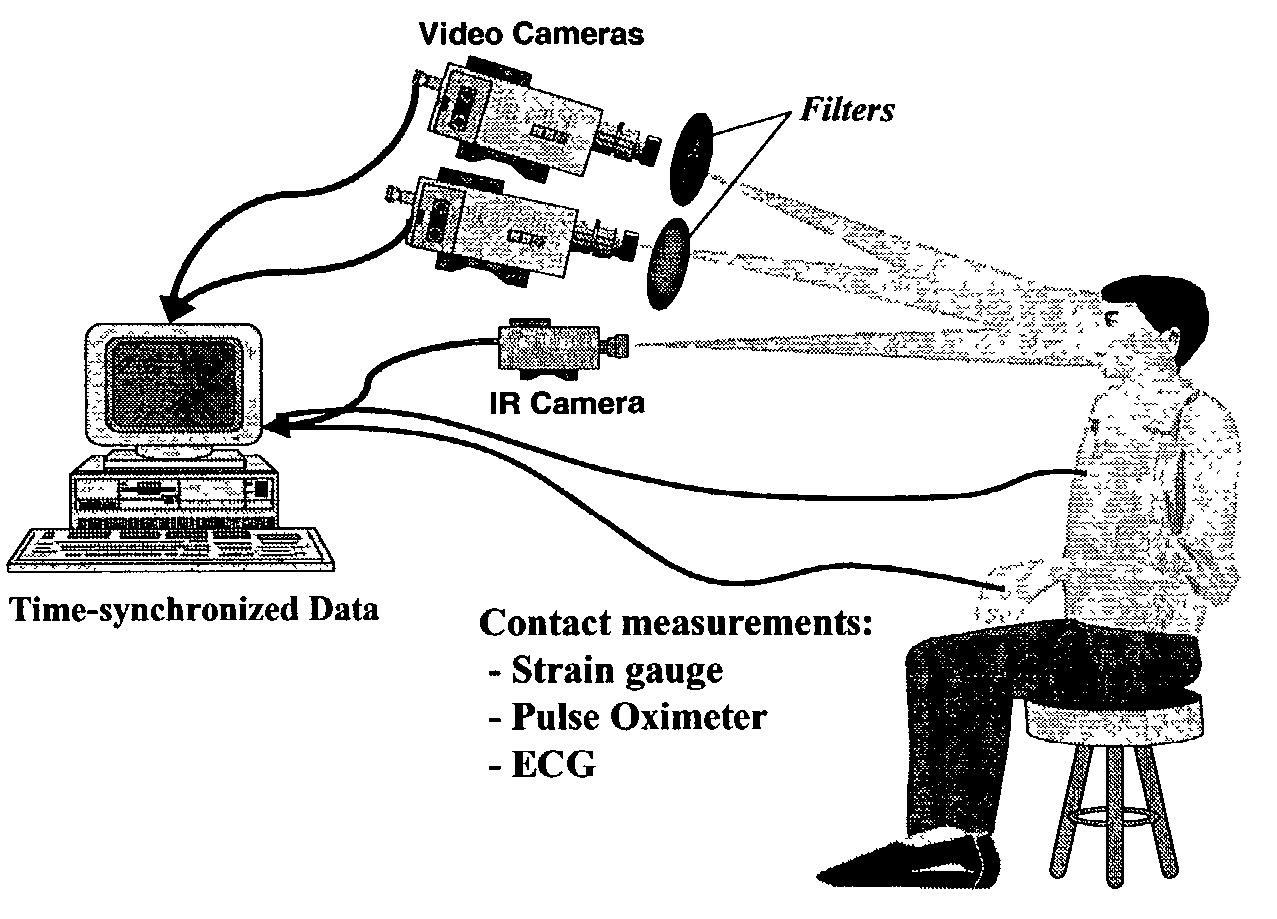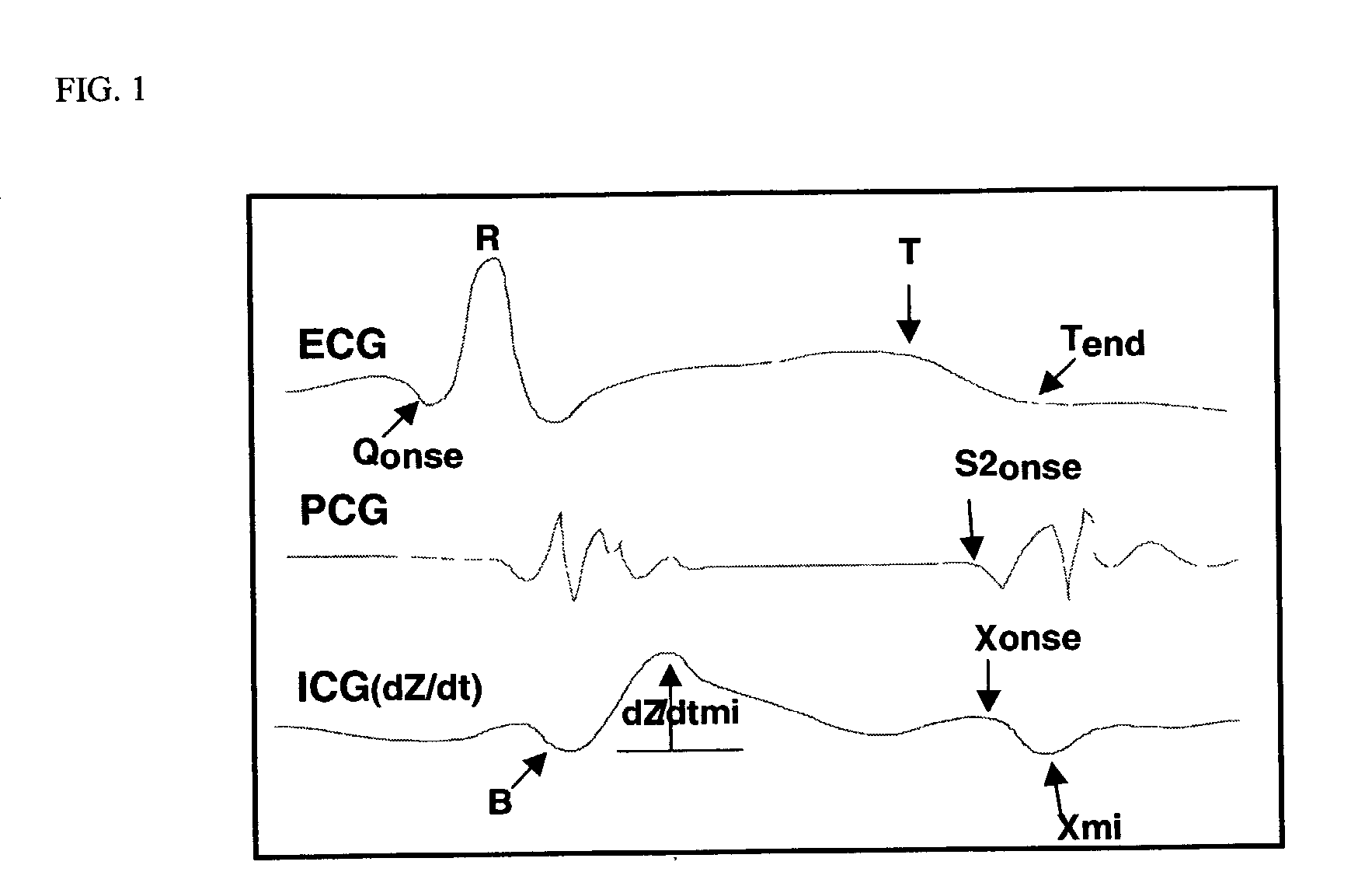Identification by analysis of physiometric variation
- Summary
- Abstract
- Description
- Claims
- Application Information
AI Technical Summary
Benefits of technology
Problems solved by technology
Method used
Image
Examples
example 1
Overview of the Collection of Specific Physiological Data
[0073]The core of this set of illustrative experiments is the collection of specific physiological data to address non-imaging biometrics. In this example, the core experiment focused on the collection of heart rate, respiration, and body resonance data from several contact and close proximity sensors (FIG. 8). Subjects performed a variety of tasks designed to stimulate various mental and emotional responses that could alter the observed physiological processes. Because the goal of this research was to develop signatures for human identification, it was imperative in this example that these new biometrics perform well across a range of conditions. The data collected in this experiment provided the information needed to test robustness across mental and emotional states.
[0074]It is well known that heart rate and respiration can vary with a person's mental and emotional state. To measure this variability and assess its effect on...
example 2
Sensors for Data Collection
[0076]In this example, a set of sensors was identified to collect contact biometrics data, as shown in Table 3.
[0077]
TABLE 3Sensors and Associated Biometric MeasurementsBiometricMeasurementSensorHeart RateElectrical activityECGVariabilityHeart beatPressure transducerPulsePiezoelectric transducerRespirationNasal temperature changeThermal sensorChest movementPressure transducerBody ResonanceRecorded speechMicrophoneFace RecognitionImageryVideo camera
[0078]Where possible, multiple sensors collected data related to the same underlying physiological process. For example, information about respiration was collected using a thermal sensor at the nose to measure the air temperature changes associated with inhalation and exhalation. At the same time, a strain gauge measured the expansion and contraction of the chest associated with respiration. The full suite of sensors was integrated into a single laboratory system, so that data were collected simultaneously and w...
example 3
Tasks and Conditions for Subjects
[0086]In this next example, a commonly used stress-inducing protocol was administered to the subjects to evaluate the effect of various physiological conditions on biometric parameters. In general, there are four stages of mental condition that can be evaluated in the lab: baseline phase, meditative phase, stressor stages, and recovery stages. Seven different two-minute tasks were given to participants to measure these stages. Participants initially had physiological parameters monitored and recorded while in a relaxed, but not meditative, condition. Next, participants were asked to relax as fully as possible with eyes remaining open and room lights dimmed. Next, they were asked to read non-provocative material (Declaration of Independence) and then perform simple mathematical tasks (serial 7's). Following these two procedures, they were allowed to recover to allow physiological signals to return to near baseline levels. After this initial recovery p...
PUM
 Login to View More
Login to View More Abstract
Description
Claims
Application Information
 Login to View More
Login to View More - R&D
- Intellectual Property
- Life Sciences
- Materials
- Tech Scout
- Unparalleled Data Quality
- Higher Quality Content
- 60% Fewer Hallucinations
Browse by: Latest US Patents, China's latest patents, Technical Efficacy Thesaurus, Application Domain, Technology Topic, Popular Technical Reports.
© 2025 PatSnap. All rights reserved.Legal|Privacy policy|Modern Slavery Act Transparency Statement|Sitemap|About US| Contact US: help@patsnap.com



